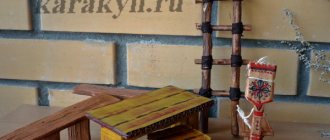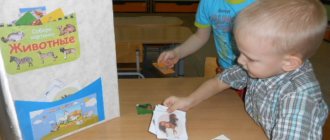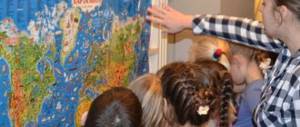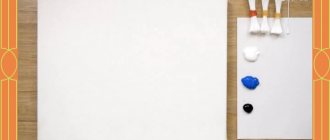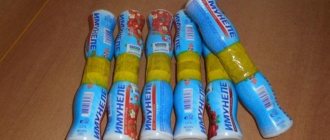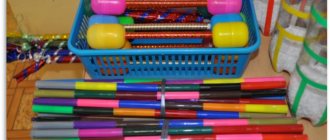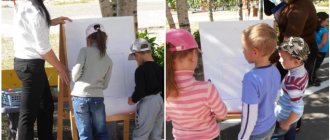Game design of board games
Recently, at the Higher School of Business Informatics of the National Research University Higher School of Economics, as part of the “Management of Game Projects” program, we held a closed master class from guest expert Yuri Zhuravlev on the topic “Game Design of Board Games.”
Yuri Zhuravlev
himself has been in board game design for 7 years, and is still involved in it today. Published such games as Viceroy, Costa Ruana, ZooMagic, Guilds of Laar and a number of others. Below the cut we have prepared a summary of his lecture for you.
Play is a phenomenon not only of human life, but also a phenomenon of life in general, since everyone plays, adults, children, and animals.
Quite ancient games, or references to them, have survived to this day, including those that existed on earth 3 thousand - 4.5 thousand years ago. But can everything be called a game? The following signs are distinguished:
- The game is free, it cannot be made mandatory for the player.
- The game is limited in space and time by precise and predetermined limits.
- The game has an uncertain outcome; it is impossible to predetermine its development or predict its outcome; the necessity of invention leaves some freedom for the player's initiative.
- The game does not create benefits and wealth, and is not connected with the material interests of the parties.
- The game is subject to a number of conditions that suspend the normal laws and establish new legislation valid for the duration of the game.
- The game is fictitious, accompanied by a specific consciousness of some kind of secondary reality or simply unreality compared to ordinary life.
What does a game designer have to work with when creating a board game? So:
Cards
Pros:
+ accommodate a lot of text and pictures; + give a high level of randomness; + hidden information; + save states; + ease of manufacture; + variability of mechanics.
Minuses:
— give a high level of randomness; - fragility; - routine.
Dices (cubes)
Pros:
+ instant results; + compactness; + high level of kinesthetics; + ease of use in games; + custom options attract to the game.
Minuses:
— give a high level of randomness; - fragility; - routine.
Playing fields
Pros:
+ visibility for players; + attracting attention; + chic design; + modularity possible.
Cons: - large sizes; — a variation of the “area control” mechanic is almost always used; - vulnerability to earthquakes.
Chips and markers
Pros:
+ unload memory; + visibility; + excellent state retention; + are made of wood, plastic, metal.
Minuses:
— vulnerability to earthquakes; - most often unattractive; - easy to lose; - Difficulties for colorblind people.
Tokens
Pros:
+ unload memory; + visibility; + excellent state retention; + availability of information on them; + beautiful design; + abundance of mechanics.
Minuses:
- easy to lose; - fragility.
Tiles
Pros:
+ visibility; + excellent state retention; + can make up the playing field; + availability of information on them; + beautiful design; + are almost always on the table, durability; + come in any shape.
Minuses:
— the playing field of tiles often “spreads”.
Tablets
Pros:
+ visibility for players; + attracting attention; + chic design; + small sizes.
Minuses:
— vulnerability to “earthquakes”; - unique information.
Miniatures
Pros:
+ attracting attention; + chic design; + high level of kinesthetics.
Minuses:
- high cost; - do not provide a unique gaming experience; — the danger of becoming miniaturized.
Screens
Pros:
+ chic design; + small sizes; + convenient way to hide information; + instructions for playing on the inside.
Minuses:
- do not provide a unique gaming experience; - vulnerability to earthquakes.
Having dealt with these working elements, you can move on to the main types of board game mechanics, which are formed from various combinations of the above objects.
Namely:
- Worker-placement: Chips/Cubes + Fields/Tablets/Cards/Tiles
- Tile-placement: Tiles + Chips
- Deckbuilding: Maps + Fields/Tablets optional
- Bagbuilding: Tokens/Dice/Tiles/Chips + Bags (which contain chips)
- Draft: Cards/Tiles + Tokens/Tablets optional
- Dice Rolling: Dice
- Action Points and Action Selection: can include anything
So, how do you make your own game: how can you look for ideas, how to make prototypes correctly, how and with whom to conduct tests, what needs to be balanced in the game, and how best to publish it?
Method I: Home Rules
Instructions:
1. Play a board game. 2. Love it, but not very much :) 3. Come up with rules by which it will be more pleasant for you to play it. And maybe your friends. 4. Test the rules with friends, and perhaps post them online.
Method II: copy-paste
Instructions:
1. Play a board game. 2. Love her very much. 3. Come up with exactly the same one, but about orc flower growers. 4. Add a few “significant” differences from the original to your game.
Method III: Cool Plot
Instructions:
1. Read a book or watch a movie. 2. Get inspired by the plot. 3. Come up with rules by which the characters in the book or film could act in the game. 4. Fail to do this and add event cards to the game.
Method IV: Players “Spin the Crocodile”
Instructions:
1. Play a board game or look around. 2. See a cool game solution in the process. 3. Use it in your own way. 4. Add a dozen more similar cool solutions to the game.
Method V: Brainstorming
Instructions:
1. Want to make a board game. 2. Choose a time, call your friends, stock up on paper and pencils. 3. Create. 4. PROFIT!
Method VI: Be children
Instructions:
1. Scatter components from board games on the floor, table, balcony and bathroom. 2. Remember yourself as a child. 3. Play the components as it plays itself, just to have fun. 4. After writing down cool ideas, don’t collect anything: suddenly, if you step on a cube, it will dawn on you again?
Now some important information about prototyping
your future game.
Prototype requirements:
1. He must be. And the sooner the better. 2. You can play it at least a couple of turns. 3. Draft design. 4. Willingness to scribble on it with a pen. 5. Willingness to throw out the first few iterations.
Main mistakes:
1. Final art. 2. Poor ergonomics. 3. The convenience of the players has not been thought through. 4. Unplayable balance.
This is followed by the testing phase.
Test objectives:
1. Identify the viability of the concept. 2. Find serious bugs and breakdowns. 3. Rid the game of crutches. 4. Collect the emotional response of testers. 5. Bring the game to final balance. 6. Polish the game until it shines.
Test script:
1. Find like-minded people or just kind people and organize a meeting 2. Explain the rules of the game on the spot. You shouldn’t send the rules in advance unless it’s a presentation to a publisher. 3. It is advisable not to play by yourself, but to observe from the sidelines. 4. Answer questions from testers, discuss controversial issues, and come up with new rules in a timely manner. 5. Write down all ideas, questions, results of the game: the winner and its duration. 6. Ask 3 questions: what did you like about the game, what did you not like about the game, would you play it again?
Testing should be followed by a balancing stage.
Types of balance:
1. Mathematical balance: zero sum. 2. Emotional balance: transactions. 3. Balance of testers: there are no weak links here. 4. Self-balance of players: what about me?! 5. Author's balance: I'm an artist, I see it that way.
After all this, you need to decide whether to publish your project yourself, collecting money for it through crowdfunding systems, or resort to the services of a publisher
. In the second case, it is worth considering the following features:
Specifics of working with the publisher:
1. Contract for ~5 years with a royalty of 4-7% of the wholesale. 2. 98% change in setting. 3. Reworking ~30% of the game to suit the publisher's needs. 4. Lots of feedback from testers. 5. Possibility to receive an order for development.
Thanks to Yuri for such a useful and interesting master class!
We take this opportunity to invite you to our absolutely free exhibition-conference “Lecture Day on the Gaming Industry”, where we will have new reports on the gaming industry, notes from which I will also publish on Habré.
Puzzles
The child’s goal is to assemble the picture correctly.
Objectives: - the purpose of the cut pictures is to teach the child to compose a whole from several parts; correlate the images of parts of the drawings with the holistic image of real characters; — in the process of playing with pictures, the child gets acquainted with the world around him, expands his vocabulary, and his speech becomes more active; - develops logical thinking, attention, visual perception, gross and fine motor skills, coordination of movements, creative imagination, perseverance, concentration; - promote the development of the ability to compare, contrast, analyze, generalize, and draw conclusions; — cultivate patience, the desire to independently assemble the picture to the end.
Instructions: It is proposed to assemble one whole image from a set of pictures. The child must tell who is depicted and what he knows about the drawn characters. Give the children all the pictures from all the puzzles - a task for classification, analysis, generalization - sort into groups.
Colorful gnomes
Digitized animals
Wizards.
Flying
Floating
Residents of the Violet Forest
How to design a playground in a kindergarten
Here, the scope of creativity is limited only by the imagination and creativity of educators. Decorating a playground in a kindergarten is an interesting and at the same time low-cost activity. You can make an exclusive and functional design from scrap materials:
- from old large Lego pieces and bottle caps you can make an orthopedic “health path”, along which children can walk barefoot or in socks and train their feet;
- sawn cylindrical timber will make excellent stumps of different sizes, which will be placed on a developmental playground in a kindergarten;
- it is possible to make a car from boards and car tires, from processed timber - a boat or a small house for playing “shop”;
- the wooden playground can be painted in bright colors or your favorite characters can be drawn on them, turning it into a fairy-tale place;
- ceramic tiles and concrete mortar are transformed into sheets of water lilies, a mini-pond with plastic frogs and water lilies living there;
- The stones make a beautiful alpine hill with flowering plants and decorative garden figurines.
The playground in a kindergarten is a central place for fun outdoor games or quiet time, so it needs to be made not only safe, but beautiful and original.
